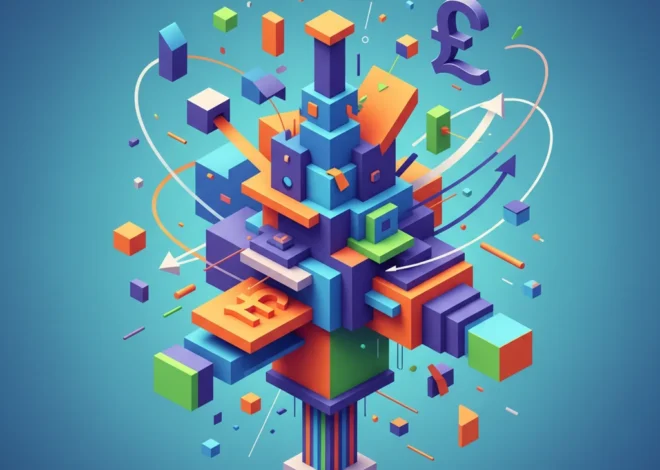
The Digital Arena: How AI and Blockchain Are Rewriting the Rules of Financial Warfare
The world of high finance has always been an arena of conflict. For decades, a tense, strategic dance has played out between two opposing forces: the “attackers”—activist investors and short-sellers who profit from perceived weakness—and the “defenders”—the corporate management and long-term shareholders who protect a company’s value. This dynamic, as described in a recent letter to the Financial Times, is a perpetual “cat-and-mouse game.” However, the traditional playing field is being irrevocably altered. The introduction of powerful new technologies like artificial intelligence and blockchain is not just changing the players’ strategies; it’s redesigning the entire arena.
The GameStop saga of 2021 was a dramatic preview of this new era. It wasn’t just a classic short squeeze; it was a digitally-native insurgency, coordinated on social media and executed by a decentralized army of retail investors. This event threw a harsh spotlight on the vulnerabilities of the old guard and signaled that the tools of financial warfare were evolving at a breathtaking pace. Today, we stand at a critical juncture where the future of investing, corporate governance, and the very structure of our stock market are being forged in the crucible of technological innovation.
The Classic Battlefield: A Tale of Attackers and Defenders
To understand where we’re going, we must first appreciate the traditional landscape of corporate conflict. This is a world built on information asymmetry, strategic maneuvering, and psychological warfare.
The Attackers: These are the agents of disruption. They fall into two main categories:
- Short-Sellers: These investors, like the now-famous Hindenburg Research, bet against a company’s success. They borrow shares, sell them on the open market, and hope to buy them back later at a lower price, pocketing the difference. Their strategy relies on identifying overvalued, fraudulent, or fundamentally flawed businesses and then publishing research to convince the market of their findings. Their success hinges on creating a narrative of failure.
- Activist Investors: Figures like Carl Icahn or Bill Ackman take a different approach. They buy a significant stake in a company they believe is underperforming and use their position as shareholders to force major changes—demanding new management, board seats, asset sales, or shifts in corporate strategy. Their goal is to “unlock” value that they believe current management is squandering.
The Defenders: On the other side stands the corporate establishment.
- Corporate Management & The Board: The C-suite and board of directors are the primary line of defense. Their goal is to execute their long-term strategy and maintain market confidence. Their defensive toolkit includes investor relations campaigns, share buyback programs to support the stock price, and legal maneuvers like the “poison pill” to make a hostile takeover prohibitively expensive.
The historic battle between Bill Ackman and Carl Icahn over Herbalife is a textbook example. Ackman launched a massive short-selling campaign, calling the company a pyramid scheme, while Icahn took the other side, buying up shares and defending the business model. The ensuing conflict was a multi-year war of attrition fought through media appearances, regulatory filings, and massive capital deployments. It was a classic, analog fight for control of the narrative. But today, that fight is moving into the digital domain.
The Investor's Crossword: Decoding the Puzzles of the Modern Economy
The AI Arms Race: Supercharging Financial Strategy
Artificial intelligence is no longer a futuristic concept in finance; it’s a present-day weapon. AI is amplifying the capabilities of both attackers and defenders, creating a high-speed, algorithmically-driven arms race that makes the old ways of operating seem quaint.
As AI’s role in the economy grows, its application in trading and market analysis has become a multi-billion dollar industry. A 2023 report from Research and Markets projects the global AI in Fintech market to reach $41.16 billion by 2030, highlighting the massive investment in this technological shift.
Here’s how the tools of engagement are evolving for both sides:
| Player | Traditional Toolkit | AI-Powered Toolkit |
|---|---|---|
| Attacker (e.g., Short-Seller) | Manual fundamental analysis, reading financial reports, on-the-ground research, insider networks. | AI-driven sentiment analysis of social media/news, predictive algorithms to identify vulnerabilities, high-frequency trading to exploit price drops, natural language processing (NLP) to scan millions of documents for red flags. |
| Defender (e.g., Corporate Management) | Press releases, investor relations calls, share buybacks, legal defenses (“poison pills”). | AI-powered market surveillance to detect unusual trading patterns, predictive analytics to forecast activist threats, automated PR tools to counter negative narratives in real-time, sentiment tracking to gauge shareholder mood. |
For attackers, AI can sift through terabytes of data—from satellite imagery of empty parking lots to the tone of a CEO’s voice on an earnings call—to find weaknesses invisible to the human eye. For defenders, AI offers a new form of digital radar, providing early warnings of coordinated attacks or shifts in market sentiment, allowing them to react in minutes rather than days.
The Great Equalizer? How Blockchain Could End the Game
If AI represents an escalation of the conflict, blockchain technology offers a potential path to a truce. The core premise of the cat-and-mouse game is information asymmetry—one side knowing something the other doesn’t. Blockchain, the technology underpinning cryptocurrencies and decentralized finance (DeFi), is fundamentally about creating a single, shared, and immutable source of truth.
Imagine a financial world built on this technology. This is the future envisioned by many pioneers in financial technology.
- Total Transparency: In a blockchain-based stock market, every single transaction could be recorded on a public, immutable ledger. Complex and opaque financial instruments and ownership structures would be laid bare. It would be impossible to hide a massive short position, as that data would be available for all to see in real-time. This radical transparency could defang the primary weapon of many short-sellers, whose strategy relies on revealing hidden information.
- Decentralized Governance: The rise of Decentralized Autonomous Organizations (DAOs) presents a new model for corporate governance. In a DAO, rules are encoded in smart contracts and shareholder voting is direct, transparent, and executed on the blockchain. This could strip power from entrenched boards and management, giving shareholders a more direct and powerful voice, potentially preempting the need for activist investors to launch costly public campaigns. According to a report by DeepDAO, the total value of assets managed by DAOs has grown into the billions, showing this is no longer a niche concept.
- Instant Settlement: Traditional stock market trades take days to settle (T+2), creating a period of risk and uncertainty that can be exploited. Blockchain enables near-instantaneous settlement, reducing counterparty risk and eliminating practices like the “failure to deliver” shares that became a point of contention during the GameStop frenzy.
However, this vision is not without its challenges. The transition to a blockchain-based financial system faces immense regulatory hurdles, questions of scalability, and significant cybersecurity risks. While it promises to solve old problems, it could create new, unforeseen ones. The world of banking and traditional economics is built on centralized trust, a model that DeFi seeks to upend entirely.
Chile at a Crossroads: How a Political Shockwave Could Reshape Its Economy and Markets
What This Means for You: Navigating the New Financial Arena
This technological transformation is not just an academic exercise; it has profound, practical implications for everyone involved in the markets.
For Investors: The playing field is becoming more complex. The rise of AI means that narratives can be built and destroyed at machine speed. It’s more important than ever to conduct deep due diligence and not get swept up in algorithmically-fueled momentum, whether positive or negative. At the same time, new tools are providing retail investors with access to data and analysis that was once the exclusive domain of hedge funds. Understanding the basics of fintech is no longer optional for serious investing.
For Business Leaders: The concept of a corporate “defense” has changed. It’s no longer enough to have a good PR firm. Companies must now cultivate radical transparency and robust corporate governance as their primary shield. Leveraging financial technology to monitor market dynamics and shareholder sentiment is crucial. In this new world, the best defense is a genuinely well-run, transparent business that leaves no room for attackers to build a negative narrative.
Liquid Assets: What Lakeside Living Teaches Us About Navigating Financial Markets
Conclusion: A New Game, A New Set of Rules
The cat-and-mouse game of financial markets is not over, but the characters and the environment have fundamentally changed. The lone analyst poring over spreadsheets has been replaced by an AI analyzing global data streams. The closed-door boardroom negotiation is being challenged by the open-source transparency of the blockchain. This evolution from a human-led conflict to a technology-driven one is reshaping the core principles of our stock market and economy.
We are moving from a game of chess to a game of high-speed, three-dimensional warfare. The question that remains is whether this technological arms race will lead to a more efficient, stable, and fair market for all, or a more volatile, unpredictable, and dangerous one. The future of finance hangs in the balance, and the next move is on the board.
user
Related Posts

The Great ISA Shake-Up: What Proposed Rule Changes Mean for Your Investments

The Billion-Dollar Glitch: How a Simple Location Tag Exposed Deep Economic Risks in the Digital Age
